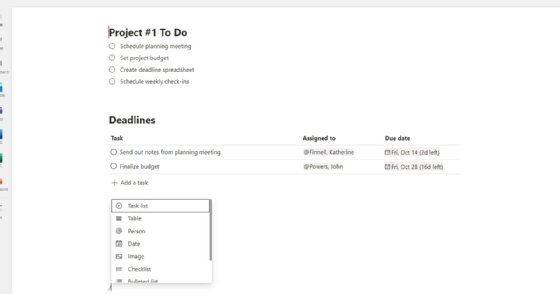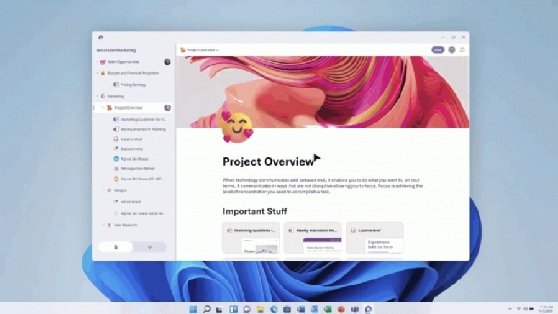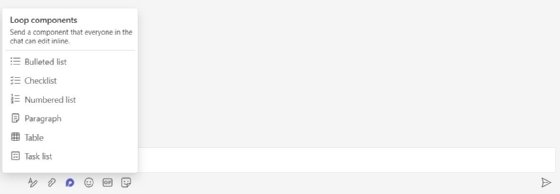
Comparing Microsoft Loop vs. SharePoint for businesses
Microsoft's announcement of Loop came with various questions -- in particular, how the new product compares to legacy products, like SharePoint. Here, find out how the two differ.
Since the COVID-19 pandemic began, remote and hybrid workplaces have become popular. Many interactions and collaboration between team members quickly became and still remain virtual.
During the pandemic, Microsoft promoted its 365 product suite as the go-to platform for virtual interactions. The vendor also saw its customers embrace services like Teams and SharePoint for remote work and collaboration. Then, in 2021, Microsoft introduced a new app for remote work and collaboration called Microsoft Loop.
But what is Microsoft Loop, and how different is it from SharePoint for content management and collaboration?
What is SharePoint?
Organizations consider SharePoint an intranet service that supports enterprise content storage and management. Features like file sharing, versioning, delivery and custom list creation have helped employees access corporate data from anywhere using a browser or a mobile app.
SharePoint offers several components to support collaboration, including the following:
- data repository;
- offline access to files and synchronization options;
- content sharing and collaboration to help users co-author documents;
- custom lists and apps to manage content;
- webpages for users to access content from different sources;
- intake forms to capture user data through webpages or Power Apps;
- workflow automation to support business rules for content approval and notifications;
- site templates for components such as calendars, lists and document management; and
- support for web parts that display content from outside sources.
Sixteen years after the birth of SharePoint, the need for real-time collaboration brought forth Teams, Microsoft's team collaboration software. Teams incorporates video and audio conferencing, real-time chat and SharePoint to store content.
After organizations increased their adoptions of SharePoint and Teams amid the pandemic, Microsoft introduced a product called Loop in an attempt to better fit remote work and collaboration needs.
What is Loop?
With Loop, users can interact with and update content in different Microsoft platforms, like Outlook, Teams, SharePoint, OneNote and Word. Those platforms then reflect the changes, as Loop maintains one version of the content, regardless of the platform.
Loop has three main features: pages, workspaces and components.
Loop pages
Some users may view the pages feature as similar to OneNote. However, Loop pages enable users to insert live data and components from different sources in real time, which OneNote doesn't.
Elements within Loop pages include files, links or data from Dynamics 365 and other Microsoft 365 platforms.

Loop workspaces
Loop workspaces act like Microsoft's content explorer. They let users store critical documents and Loop components in one place. Users can see the content they work on for specific projects, and Loop workspaces enable them to interact, share ideas and collaborate on different content asynchronously and synchronously. This feature can help organize all the items teams work on together.

Loop components
Loop components can be tables, bulleted lists, checklists, paragraphs or task lists that users can edit, and the components stay up to date in connected tools, like Word, Outlook or Teams. Components' real-time updates mean users can see the same information in the components across platforms.
Loop components are also interactive, as users can view them to see who authored the content and update them in real time.

The differences between Loop and SharePoint
Microsoft Loop may seem to perform the same activities as SharePoint in regard to content storage, but Loop introduces a new collaboration experience where content -- regardless of its location or format -- can cross into multiple Microsoft 365 apps.
The key differences between Loop and SharePoint are the following:
- Real-time updates. With Loop, users can update and edit content on one platform -- like Outlook, Teams, Excel, PowerPoint or Word -- and Loop keeps the content in sync across those clients. SharePoint doesn't offer these capabilities.
- Content accessibility. SharePoint requires users to exclusively use that platform to update and edit shared content. Loop, if integrated with other apps, can update content across platforms. Also, SharePoint requires additional setup to define where content should reside.
- Microsoft 365 integrations. Microsoft integrated Loop with all 365 apps. Loop workspaces can showcase all the content a user interacts with, regardless of the information's origin. SharePoint requires users to navigate to the different sections or sites in SharePoint to access different content.
While it is still too early to tell how successful Loop's adoption might be, Loop's current components seem to give enough functionality for users to take advantage of it.








